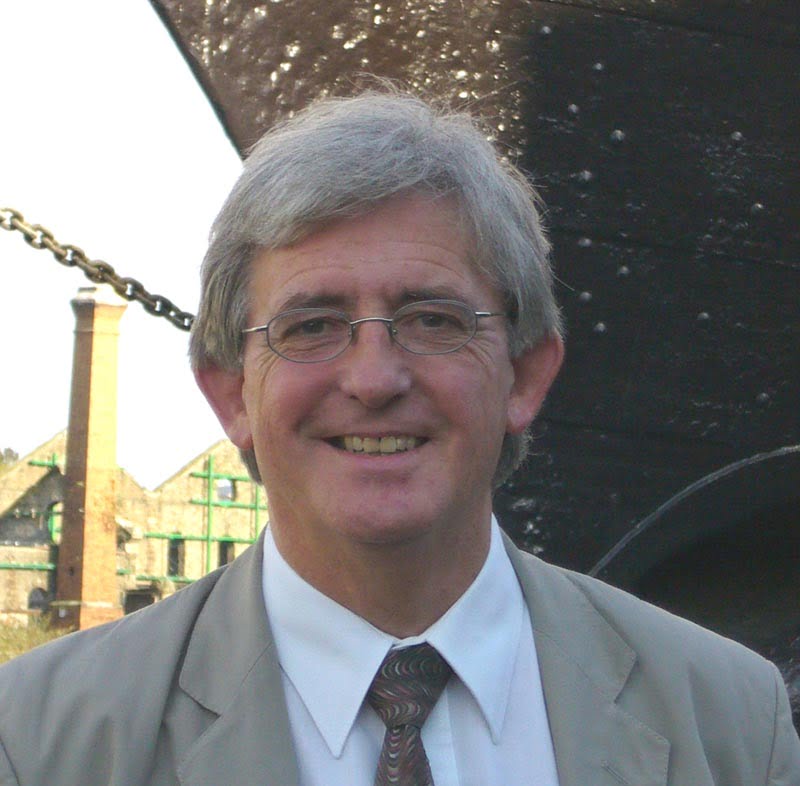After recently launching a Veterans Appeal to find descendants of those who lived, worked, served or owned vessels from the First World War, Martyn Heighton, Director of National Historic Ships UK, talks exclusively to Blue Sheets about the campaign and what he hopes to achieve.
How long have you worked with National Historic Ships UK?
MH: Since January 2006. I was appointed for 2 years as there was no guarantee that National Historic Ships would be funded after 2008/9. But we are both still here, which I hope says something about how what we do is valued.
What’s the best thing about your job? Why?
MH: There is not just one “best thing”. Working with ships and the remarkable people is part of the reward. But the other things that we do – saving ships from being sold abroad, supporting the development of the skills essential to sustaining historic vessels and broadening public interest in our collective maritime past through initiatives such as our National Photography Competition (with its emphasis on young people) bring huge personal pleasure
What does a typical day look like for you, as Director of National Historic Ships UK?
MH: There is no such thing as a typical day – one of the reasons why it’s not a struggle to get out of bed. Wednesdays and Thursdays are Greenwich days, when I try (!) to be disciplined about office-based work, but the other days are taken up with an amazing mix of visits to ships, preparing advice reports for HLF, PRISM Fund and other grant bodies, advising local authorities on ships and harbour issues, giving conservation, technical and business advice, giving lectures at home and abroad, and generally getting people to think historic ships’.
What’s your career highlight to date?
MH: Again there is no one thing, bearing in mind that I’ve been involved in heritage in many forms. So highlights include:
- Developing and opening 2 museums in Oxfordshire,
- Establishing the first phases of Merseyside Maritime Museum in Liverpool,
- Purchasing the ships EDMUND GARDNER and DE WADDEN,
- Hosting the Tall Ships races in 1984, and building the replica pilot cutter SPIRIT of MERSEYSIDE out of the proceeds;
- In Bristol hosting the UK’s first Festival of the Sea,
- Building the replica ship MATTHEW, and taking a lead in the city’s Millennium programme,
- Being Chief Executive of MARY ROSE,
- Buying Tyntesfield at the National Trust in Somerset, against all the odds with stunning support from the National Heritage Memorial Fund;
- Being a trustee, and Chair the Technical Committee for HMS VICTORY must be contenders!
- I was also very touched to be given the Museums and Heritage Lifetime Achievement Award in 2010, (even if it did make me feel old!)
Tell us more about National Historic Ships UK and the WW1 project:
MH: Most people think of the First World War in terms of land battles and the horrors of the trenches. All that is true, but there is another side. Maritime power in all its forms was vital. Admiral Lord Jellico (who led the Royal Navy at the Battle of Jutland) was described as the only man who could lose the war in an afternoon. And Britain came close to starvation through the U-Boat blockade in 1917. I wanted us to play our part in telling the story of the “other” war by tracking down the stories of the ships on our National Register of Historic Vessels which played a part (big or small) in that war.
How has the public reacted? Are they supportive and open to sharing stories?
MH: Very well. Hannah Cunliffe, who is leading the project, and Stuart Anderson (our stalwart volunteer) have had many contacts from vessel owners and people whose relatives were at sea 1914-1918 with stories of all kinds, and information in vessels. Our “pop-up” exhibition being hosted on board ships, and in museums, is going down really well.
What’s the most moving story you’ve uncovered so far?
MH: All the vessels are special in their particular way, but three spring to mind:
- Firstly there is the fast torpedo launch CMB 9 which incredibly was converted to being controlled remotely from air in 1917 and was still on the secret list well after 1945!
- Secondly there is Sea Plane Tender H21. She was designed to be towed at high speed with a Sopwith Camel biplane (or similar) which then took off when it reached a certain velocity. Brave pilots indeed, not least because they could not land back on the lighter so had to fly back to Britain or ditch in the sea alongside a warship.
- Thirdly there is the Lifeboat James Stevens. There are several lifeboats on the WW1 list with tales of rescue bravery to tell. James Stevens rescued 92 passengers from the SS Peregrine off Walton-on-the-Naze in December 1917. A remarkable achievement.”
Do you have a favourite vessel from WW1? Why?
MH: All vessels surviving from that conflict are special – after all ships are only built to last about 30 years. But the one I have frequently in my mind’s eye is the topsail schooner RESULT, which served as a Q ship during the war. She now stands forlornly and with her masts lying close by on a piece of grass in Cultra Northern Ireland. I really hope something can be done to bring this ship back to life – not as an operating vessel any more, but to tell her story and those of the thousands of topsail schooners that plied the British coasts and further afield, and of which only RESULT and KATHLEEN & MAY now survive.
What do you do in your spare time?
MH: Sleep.
Where can we find out more about National Historic Ships UK and the WW1 project?
For more information about the WW1: Britain’s Surviving Vessels project, please visit: http://www.ww1britainssurvivingvessels.org.uk.
For more information about National Historic Ships UK, please visit: www.nationalhistoricships.org.uk.

